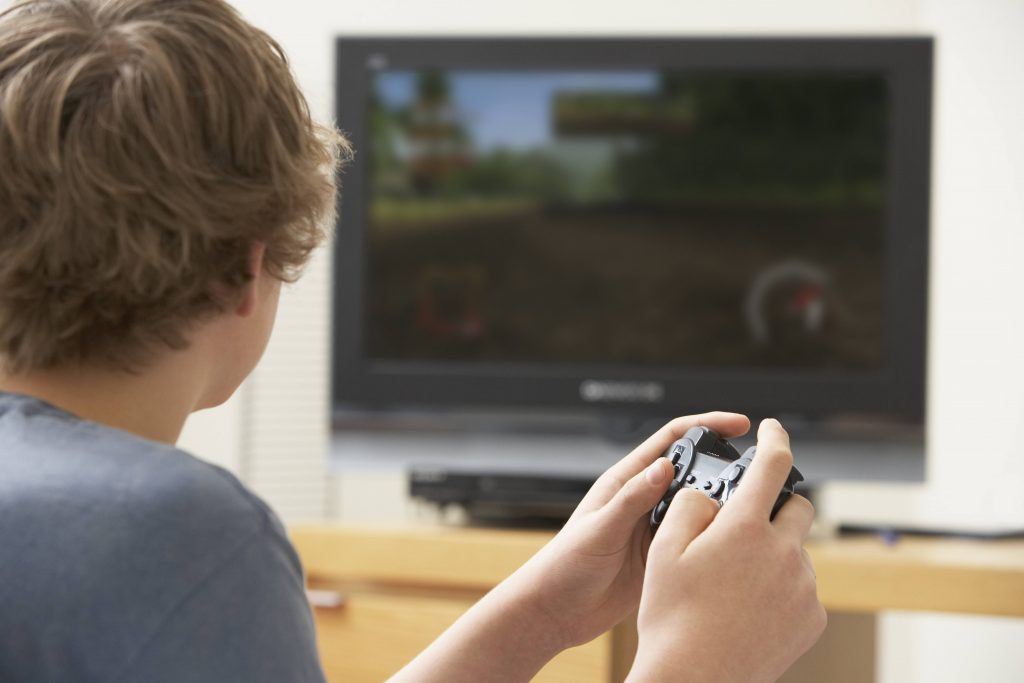-
Mayo Clinic Q and A: Children and video games

DEAR MAYO CLINIC: My son began virtual learning when the COVID-19 pandemic shut down our local school system. He is 14 and enjoys school online, so we have continued this. Unfortunately, my son's only extracurricular activities are screen-based, as well. Should I limit his activities online, even though he's doing well in school?
ANSWER: In an increasingly digitalized world, where most people — even children — own electronic devices with screens, many parents worry about the effects of screen use on themselves and their children.
To complicate matters, some screen time can be educational for children and support their social development. With the COVID-19 pandemic and stay-at-home orders, many children and teens spent even more time playing video games to socialize with friends, since they couldn't get together in person.
With screens virtually everywhere, controlling a child's screen time can be challenging. It's difficult to avoid screens completely. However, excessive screen time can affect people's mental, social and physical health.
Too much screen time has been linked to:
- Obesity.
- Poor sleep or insomnia.
- Behavioral problems, including impulsive actions.
- Loss of social skills.
- Violence.
- Less time for play.
- Eye strain.
- Neck and back problems.
- Anxiety.
- Depression.
- Difficulties with work or school.
Many people have cried, laughed or been startled while watching a movie. This is because their brains process and react to the sensory input as if it were happening to them. This same type of engagement is possible when a person plays a video game.
While gaming, a gamer's brain is processing the scenario as if it were real. If the game depicts a dangerous or violent situation, the gamers' bodies react accordingly. Their fight-or-flight response to that perceived danger is triggered by exposure to intense stimulation and violence in the game. Excessive video game use can lead to the brain being revved up in a constant state of hyperarousal.
Hyperarousal looks different for each person, and it can include difficulties with paying attention, managing emotions, controlling impulses, following directions and tolerating frustration. Some adults or children struggle with expressing compassion and creativity, and they have a decreased interest in learning. This can lead to a lack of empathy for others, which can lead to violence. Also, kids who rely on screens and social media to interact with others typically feel lonelier than kids who interact in person.
Chronic hyperarousal can have physical symptoms, as well, such as decreased immune function, irritability, jittery feelings, depression, and unstable blood sugar levels. In children, some can develop cravings for sweets while playing video games. Combined with the sedentary nature of gaming, children's diet and weight can be negatively affected, as well. Sometimes children will even avoid stopping the game to go to the restroom, which can lead to hygiene issues.
Similar to tobacco, alcohol or drugs, screen time or video games can become an addiction if it damages your health and relationships, and you are unable to control it.
Some symptoms could include:
- Having intense urges for screen time or to play video games, and these urges block out other thoughts.
- Spending money on video games or screens, even though you can't afford it.
- Cutting back on social or recreational activities because of preference for screen time or video games.
- Continuing to play video games or participate in screen time, even though you know it's causing problems in your life, such as poor performance at school or work, or letting household responsibilities go.
- Displaying signs of irritability, anxiety or anger when forced to stop playing, even for brief periods of time.
- Lying to others about the extent of your use.
- Needing more screen time over time to get the same level of enjoyment.
- Neglecting your appearance, including lack of interest in grooming or clothing.
If you are seeing any of these signs, it may be time to revisit your approach to your son's behaviors and use of screens.
You'll need to decide how much media to let your child use each day and what's appropriate based on your son's reactions. Set reasonable limits for your child's screen time and video game types, especially if your child's use of screens hinders involvement in other activities.
Also encourage active screen time over passive screen time. Active screen time is when you interact with other people you know, or when you are cognitively or physically engaged. For example, play educational games, or games that require players to build something together — or fitness-type games that require movement while playing. Passive screen time includes watching screens with minimal cognitive engagement, such as scrolling through social media or watching online videos.
Consider these tips:
- Follow guidelines for screen time, such as those suggested by the American Academy of Pediatrics.
- Model healthy use of screens and video games. Consider unplugging when you first get home from work, at dinner and when driving. Model other methods of relaxation and entertainment, such as taking a walk, playing a game, having a dance party or reading a book.
- Encourage a balance between screen time and activities that require in-person social interactions, such as family activities or extracurricular activities.
- Create structured, screen-free times, such as during mealtimes, in the mornings and before bedtime.
- Consider using apps that control the length of time your child can use a device.
- Keep screens out of bedrooms.
- Require that all devices be charged outside of bedrooms at night.
- Learn about the game rating categories and only allow your children to play video games suitable for their ages.
If you're concerned about a child or loved one's use of screen time, consulting a behavioral or addictions specialist can help determine treatment options. — Fiona Swanson, Social Services, Mayo Clinic Health System in Mankato, Minnesota
____________________________________________
Information in this post was accurate at the time of its posting. Due to the fluid nature of the COVID-19 pandemic, scientific understanding, along with guidelines and recommendations, may have changed since the original publication date.
For more information and all your COVID-19 coverage, go to the Mayo Clinic News Network and mayoclinic.org.
Learn more about tracking COVID-19 and COVID-19 trends.







